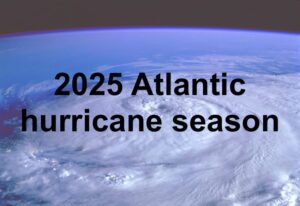Why carriers are reassessing their flood coverage

Why carriers are reassessing their flood coverage | Insurance Business America
Catastrophe & Flood
Why carriers are reassessing their flood coverage
Flood exposures are being re-examined
Catastrophe & Flood
By
David Saric
As floods increase in both severity and frequency, insurance carriers are having to reconfigure their property packages to better suit this pervasive threat.
“With floods becoming more destructive with each passing instance, insurers are realizing that their previous rating methodologies are not financially sound in today’s marketplace,” said Nick Orf (pictured), area assistant vice president at Risk Placement Services (RPS).
“Rates and packages need to be reconfigured so that insurers are not losing money when claims come in and so that policyholders are being paid out adequately to help resolve their losses.”
In an interview with Insurance Business, Orf spoke about why it is so difficult to assess the flood insurance market, where national flood programs are most helpful and how they can be used in tandem with specialty coverage.
“Risk varies from carrier to carrier, location to location”
Multiple organizations are analyzing how rates are being assessed for flood insurance across the insurance spectrum.
However, Orf noted how it is nearly impossible to stabilize rates across the entire industry, as there are different variables at play that can influence or nuance how the marketplace assesses and addresses risk.
“It is difficult to get one all-encompassing opinion on whether these lines of coverage should be raised, stabilized or should be written lower,” he said.
“Similarly, it is impossible to talk about the vitality of the marketplace because each carrier in a specified flood hotpot will look at risk differently than in areas where it is less of a threat.”
Instead, carriers should not look to sweeping assessments about flood coverage, but instead, focus on creating products that suit the risk profile of a distinct region.
“Risk varies from carrier to carrier, location to location,” Orf said.
“They should be establishing rates based on tangible, foreseeable exposures in order to safeguard their clients more holistically.”
How government insurance programs and specialty coverage can work together
The federal government established the National Flood Insurance Program in 1968 to give Americans coverage regardless of their geographic location, but the plan does have limitations.
“It is available to anyone who is looking,” Orf said. “Although, it only offers up to $250,000 in coverage for residential buildings and an additional $200,000 for contents. On the other hand, commercial businesses are eligible for up to $500,000 for both exterior and interior losses.”
Meanwhile, private markets are able to offer higher limits that includes business income, something the NFIP does not take into consideration.
“The NFIP has more specific limitations that specialty carriers don’t necessarily have,” Orf said.
For insureds who have difficulty acquiring coverage from standard carriers due to their risk exposure, the NFIP can be a good baseline option.
Clients who are looking for additional protection and to access higher limits should look to inquire about coverage from the specialty market.
“There are several different ways a specialty carrier can set that up,” Orf said.
This can be done by looking at the NFIP as a straight deductible, or they can create documentation with verbiage that is similar to FIP policy forms.
Tracking where NFIP and specialty insurance is most widely used
Another government undertaking that is useful to insurers and policyholders alike is the Federal Emergency Management Agency (FEMA), which created a map of flood zones based on frequency and severity.
Zone A, also known as Special Flood Hazard area, is located in regions that are adjacent to lakes, ponds and other large bodies of water and have a 1% annual risk of a major flood.
“NFIP coverage would be widely accessed in these areas due to the likelihood of catastrophe and the potential for restricted capacity,” Orf said.
“There is no option for this federal program to back out due to high risks — the NFIP will always provide terms for a prospective insured.”
Places like California and Florida that are seeing major insurers pull out due to elevated natural catastrophe exposures will have some baseline access through NFIP. Regions that are prone to these weather events can also access private market solutions.
“While rates may not be affordable, there are certainly options available,” Orf said.
Related Stories
Keep up with the latest news and events
Join our mailing list, it’s free!







